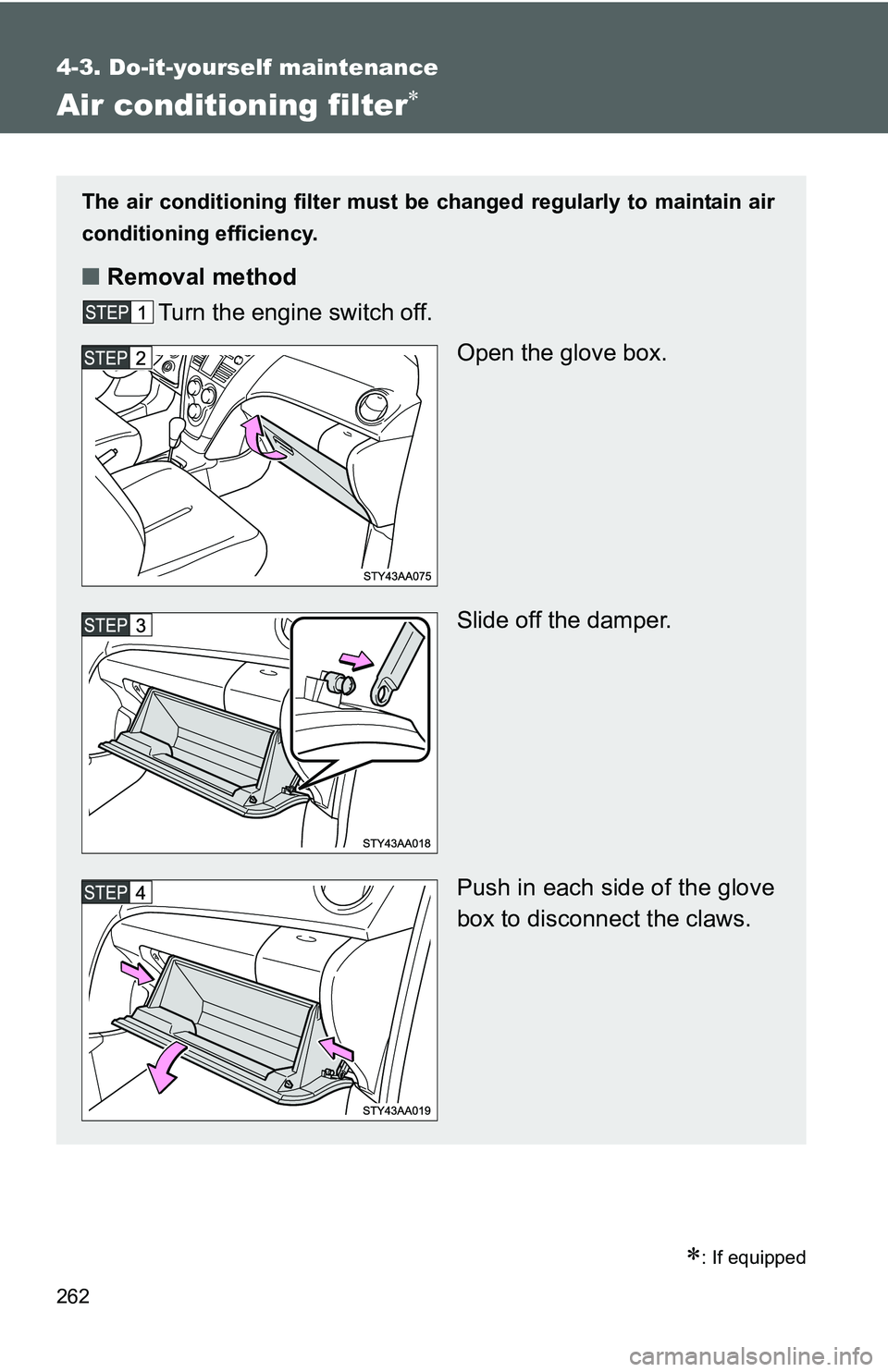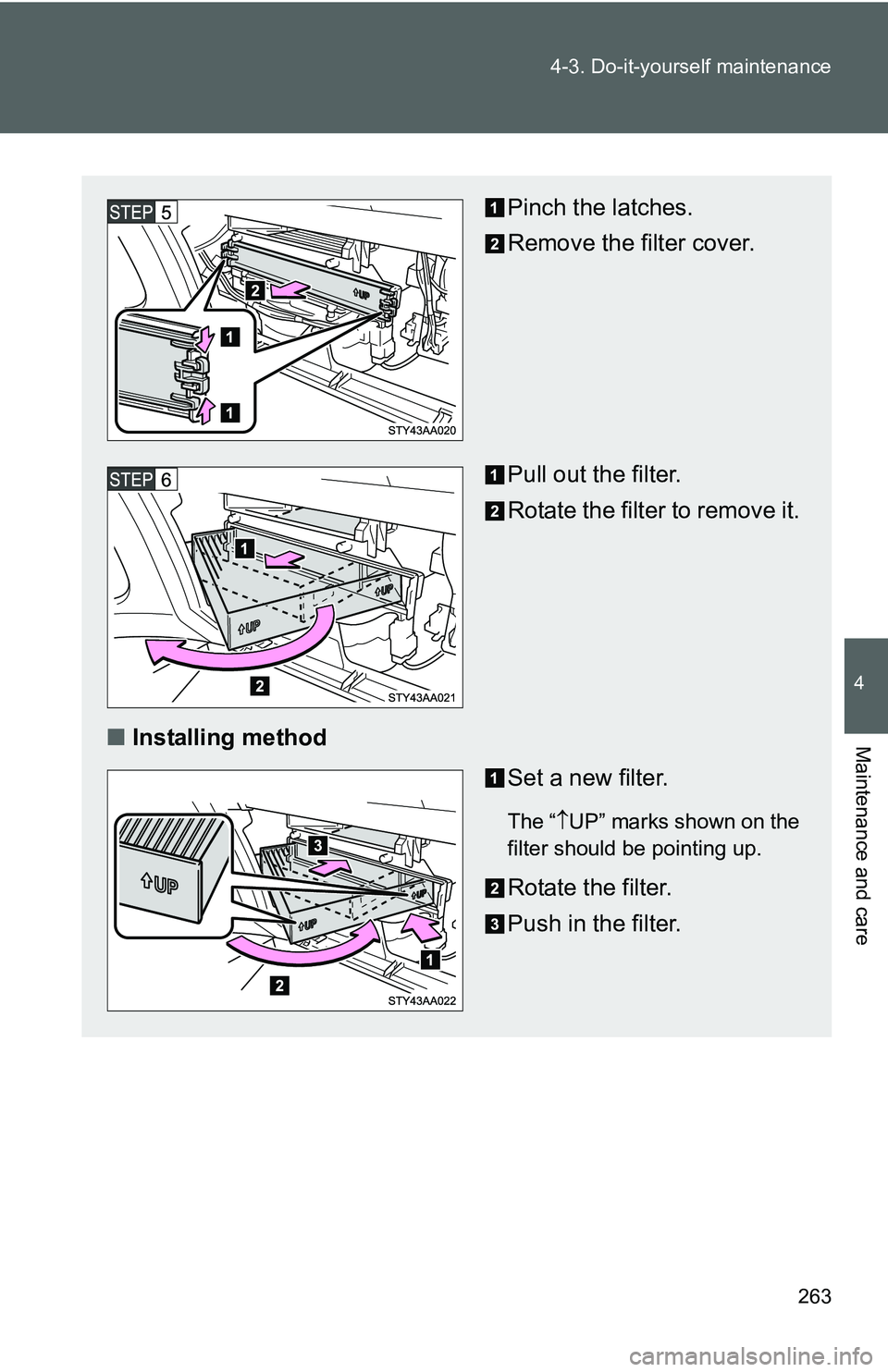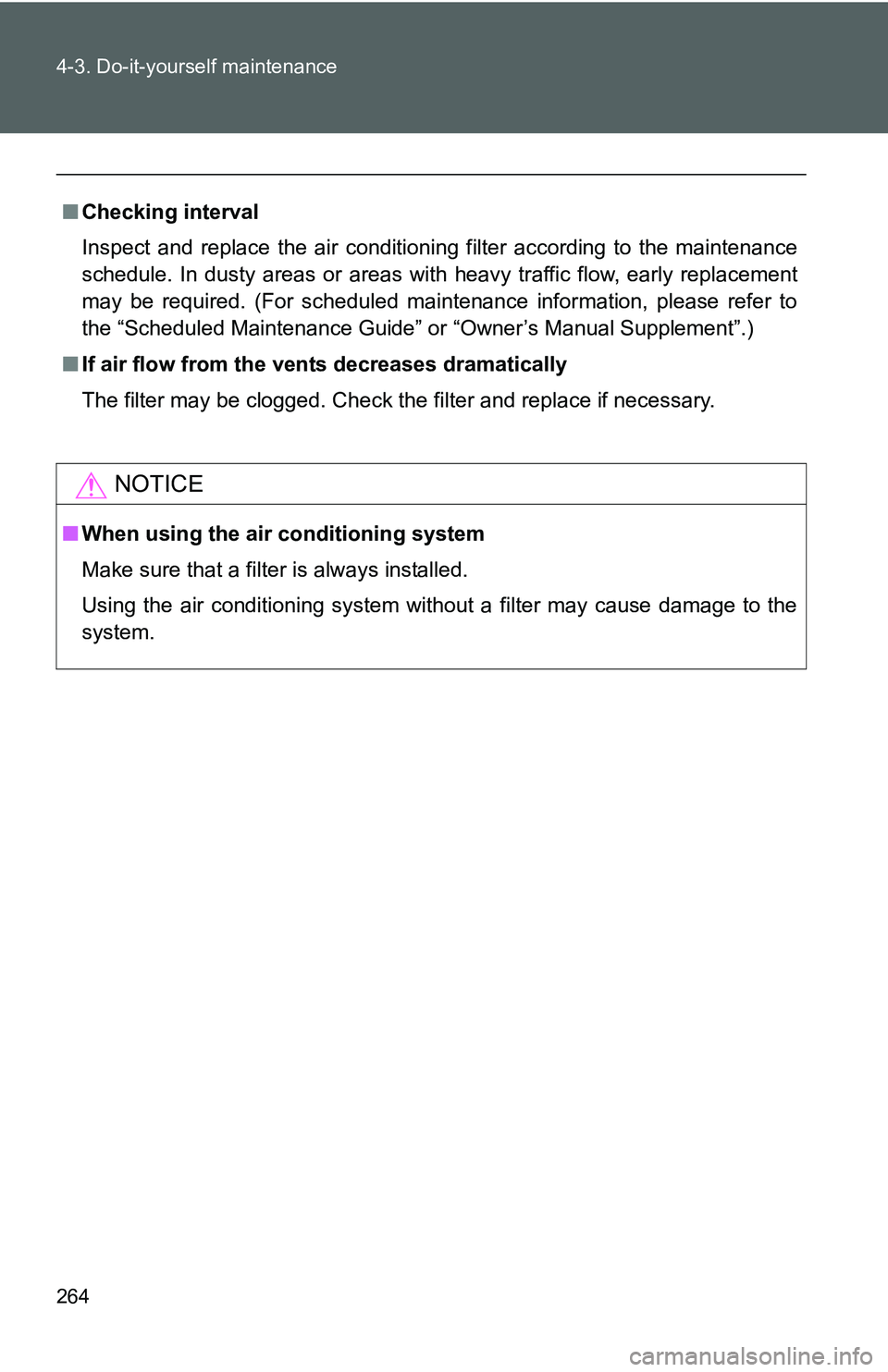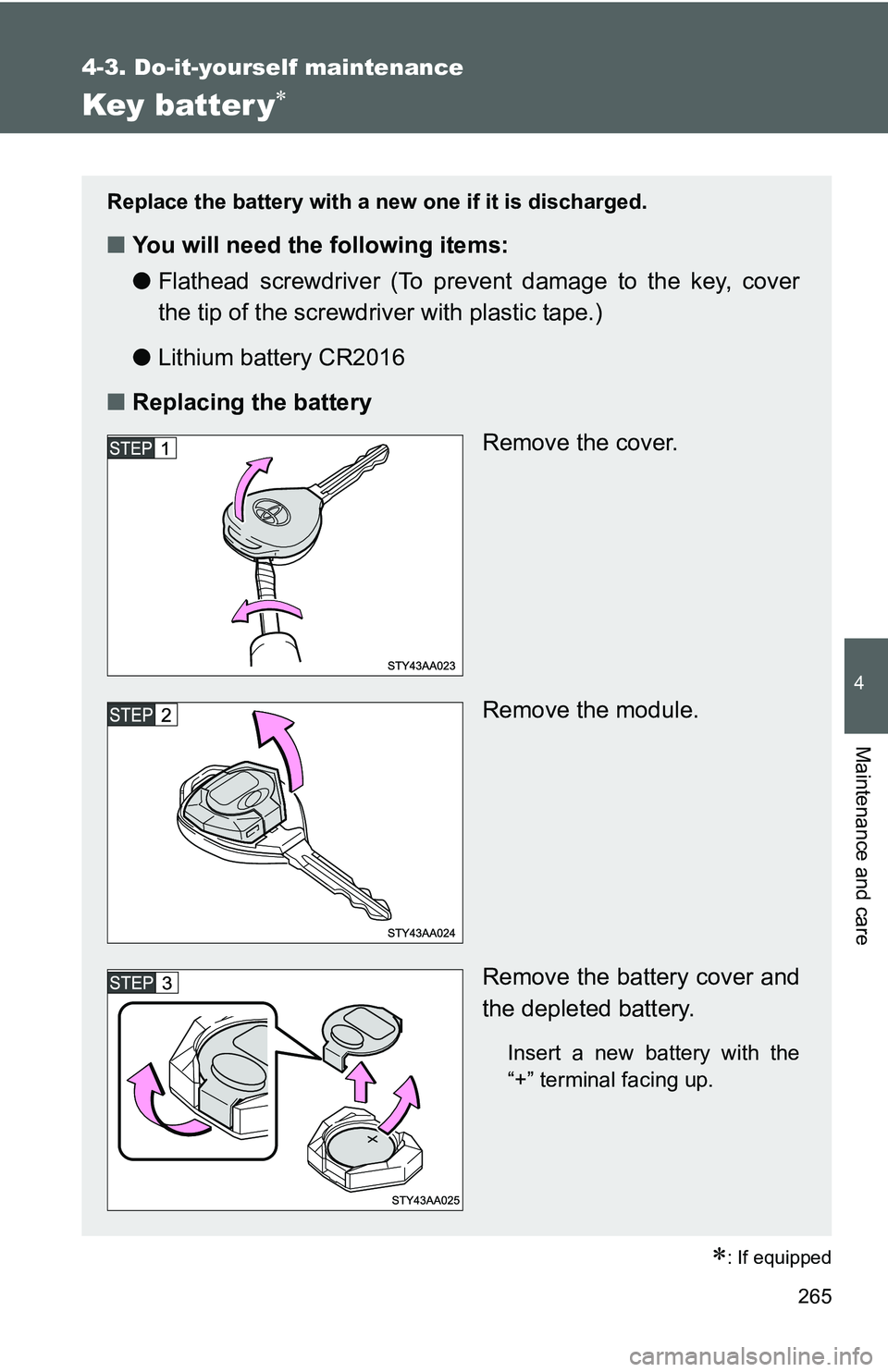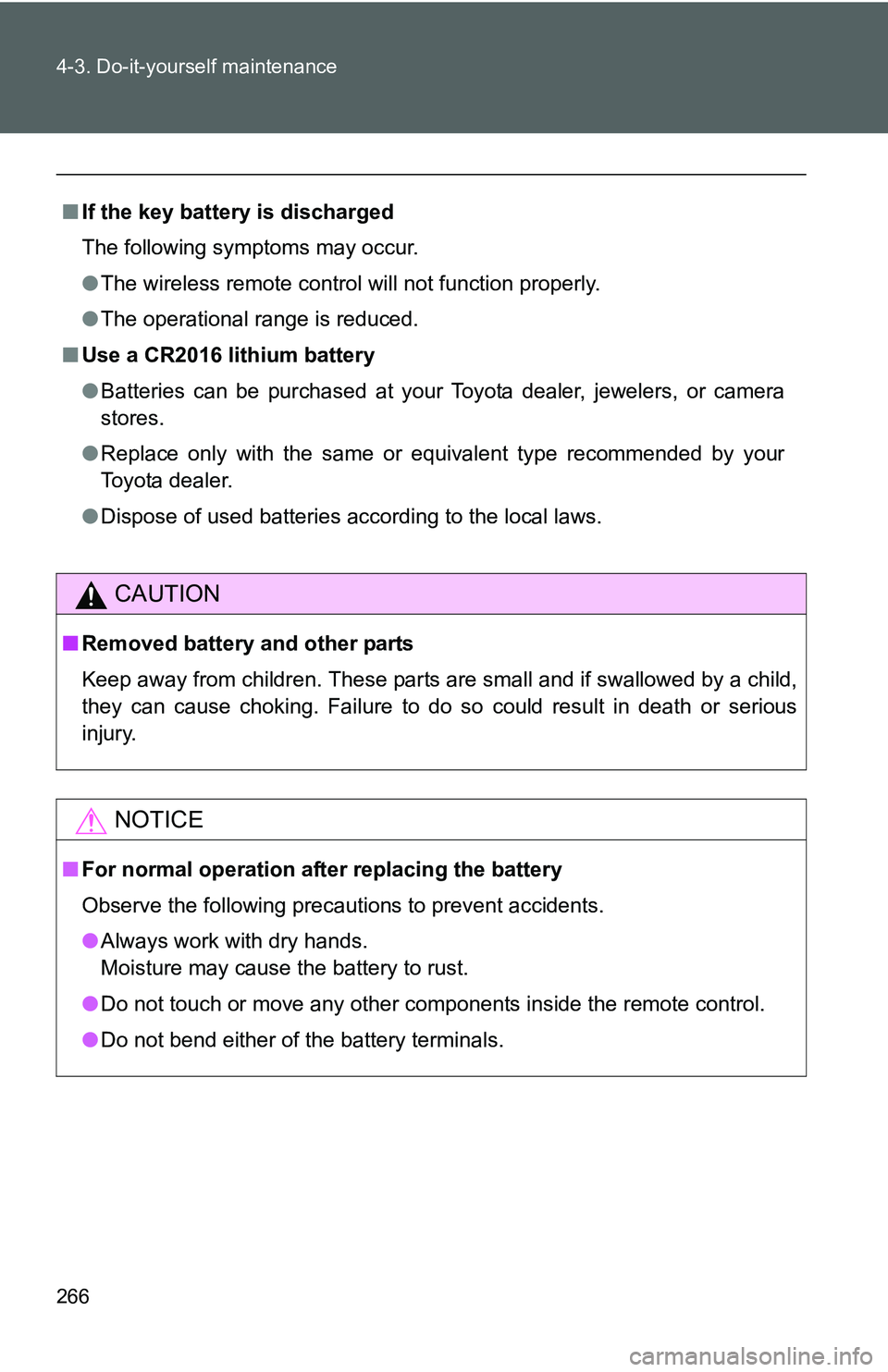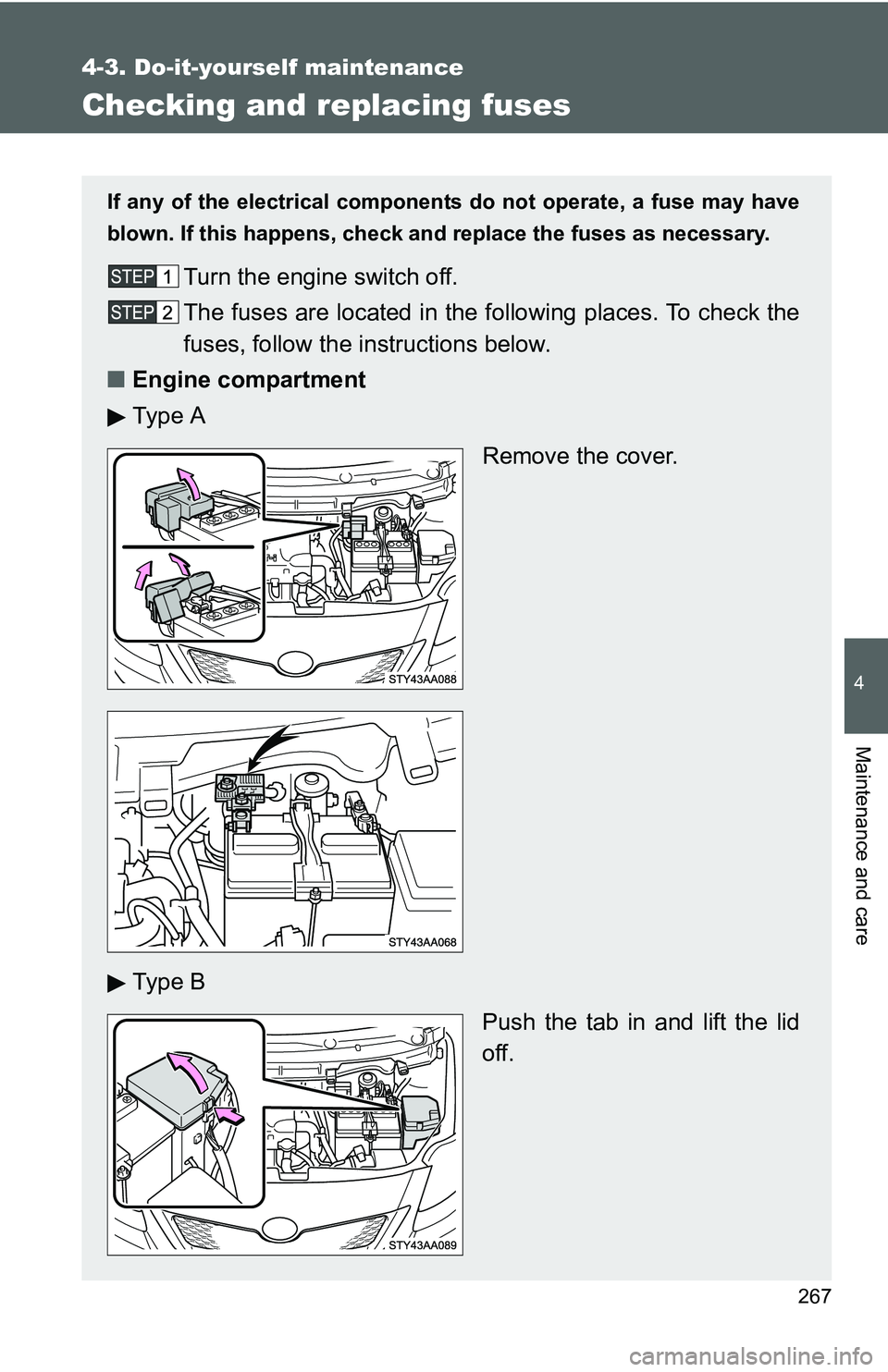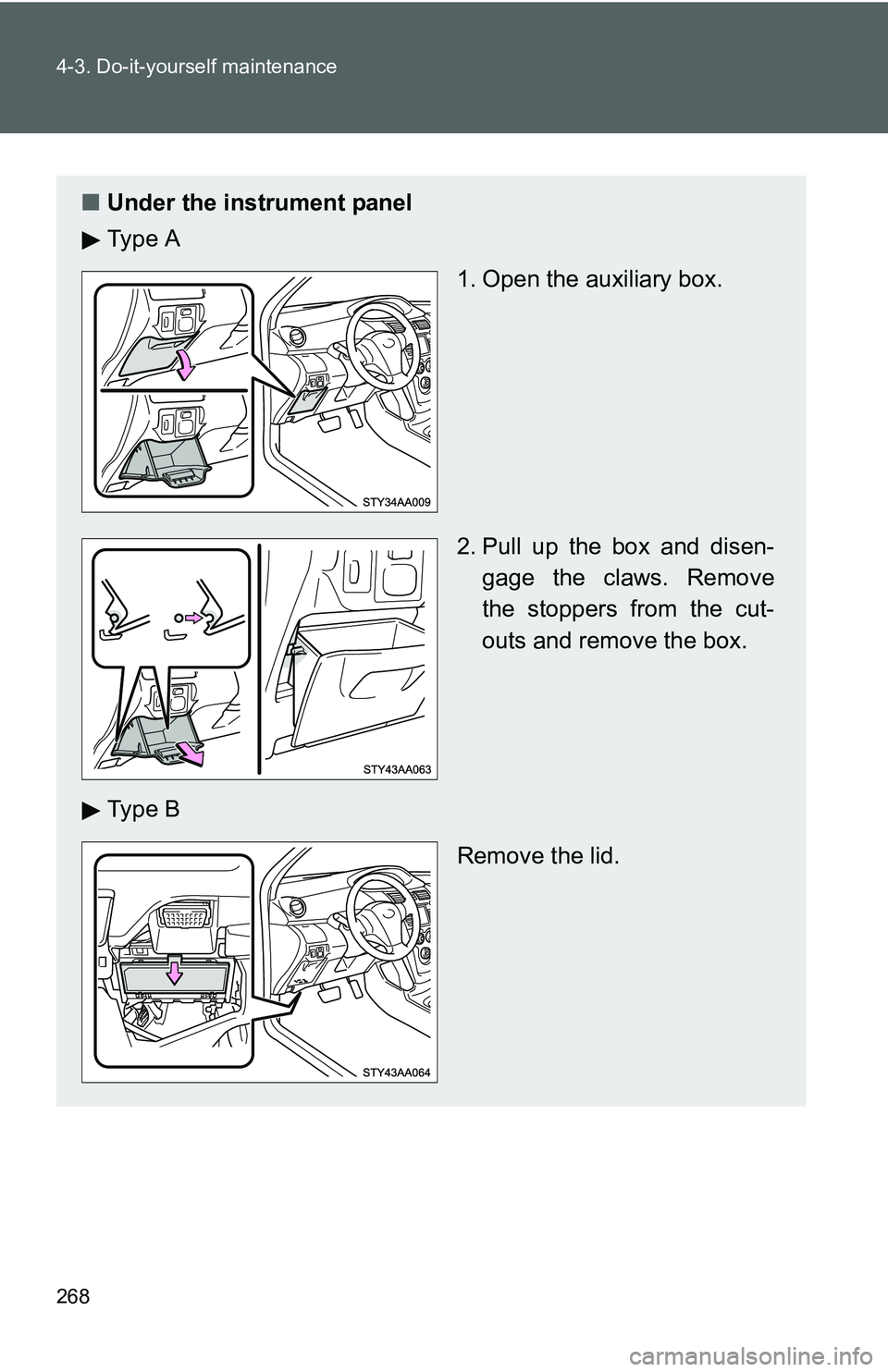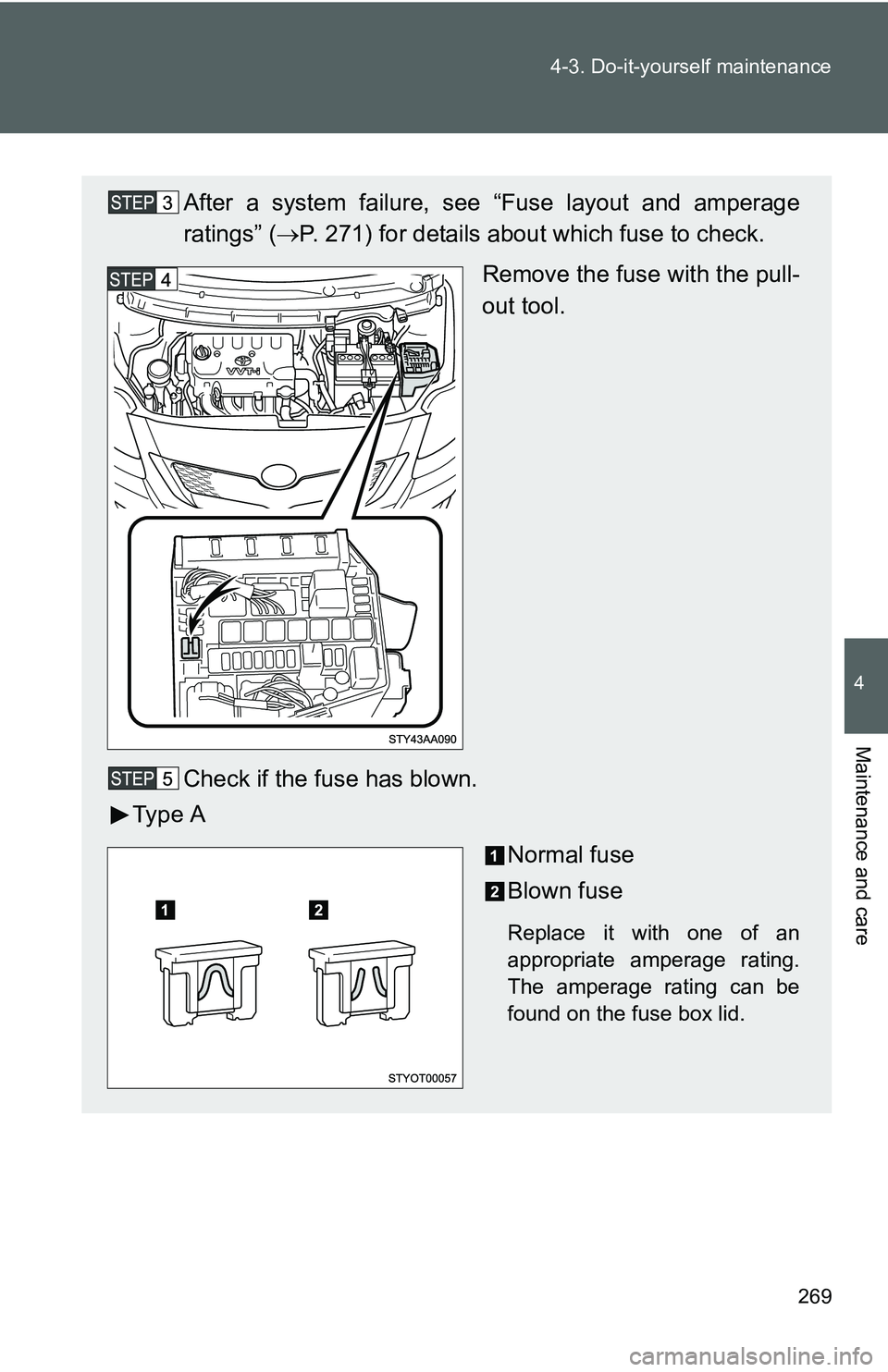TOYOTA YARIS SEDAN 2011 Owners Manual
YARIS SEDAN 2011
TOYOTA
TOYOTA
https://www.carmanualsonline.info/img/14/59283/w960_59283-0.png
TOYOTA YARIS SEDAN 2011 Owners Manual
Trending: transmission fluid, service, door lock, steering, deactivate passenger airbag, oil change, clock setting
Page 271 of 406
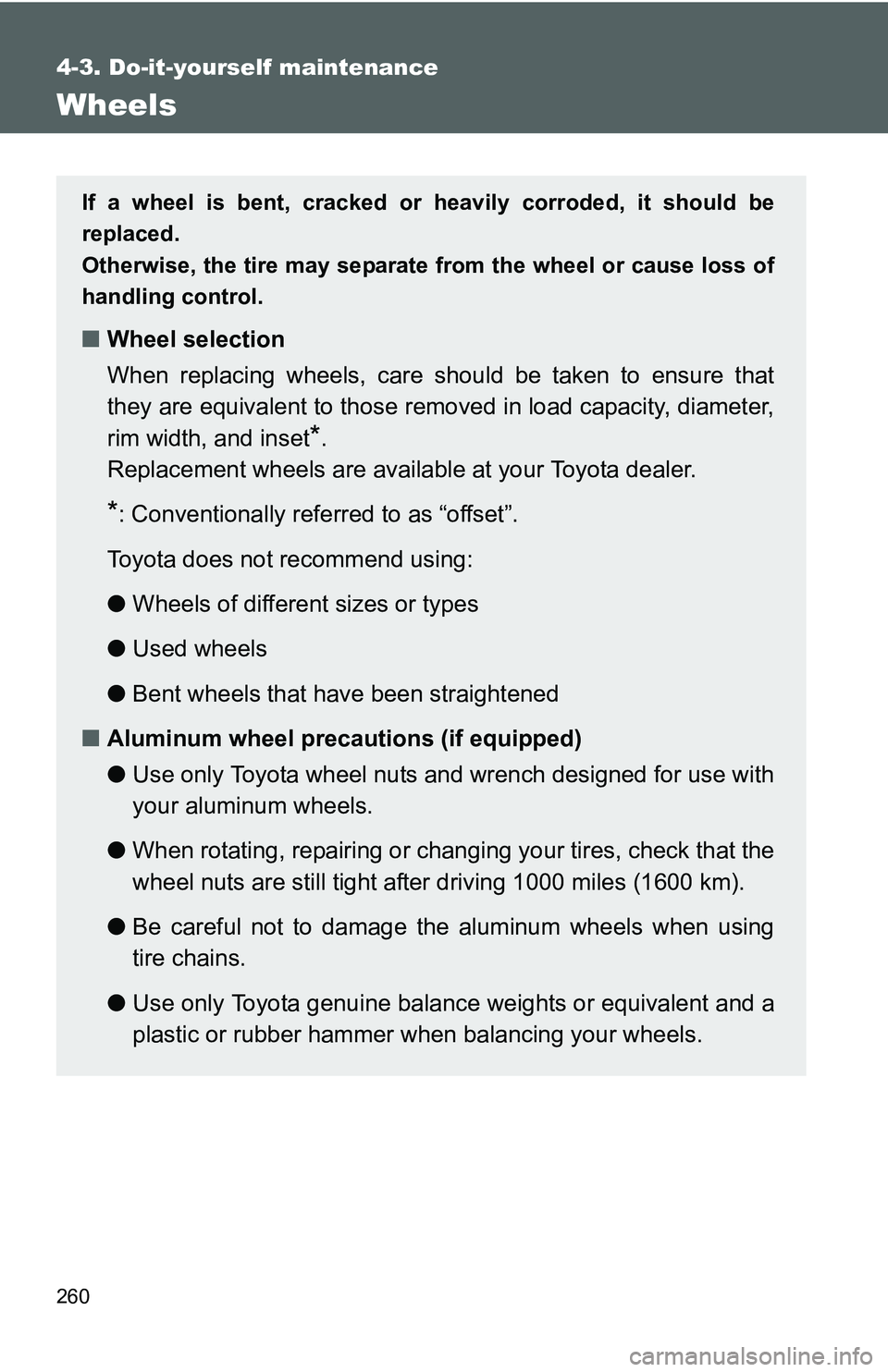
260
4-3. Do-it-yourself maintenance
Wheels
If a wheel is bent, cracked or heavily corroded, it should be
replaced.
Otherwise, the tire may separate from the wheel or cause loss of
handling control.
‚Ė†Wheel selection
When replacing wheels, care should be taken to ensure that
they are equivalent to those removed in load capacity, diameter,
rim width, and inset
*.
Replacement wheels are available at your Toyota dealer.
*: Conventionally referred to as ‚Äúoffset‚ÄĚ.
Toyota does not recommend using:
‚óŹ Wheels of different sizes or types
‚óŹ Used wheels
‚óŹ Bent wheels that have been straightened
‚Ė† Aluminum wheel precautions (if equipped)
‚óŹUse only Toyota wheel nuts and wrench designed for use with
your aluminum wheels.
‚óŹ When rotating, repairing or changing your tires, check that the
wheel nuts are still tight after driving 1000 miles (1600 km).
‚óŹ Be careful not to damage the aluminum wheels when using
tire chains.
‚óŹ Use only Toyota genuine balance weights or equivalent and a
plastic or rubber hammer when balancing your wheels.
Page 272 of 406
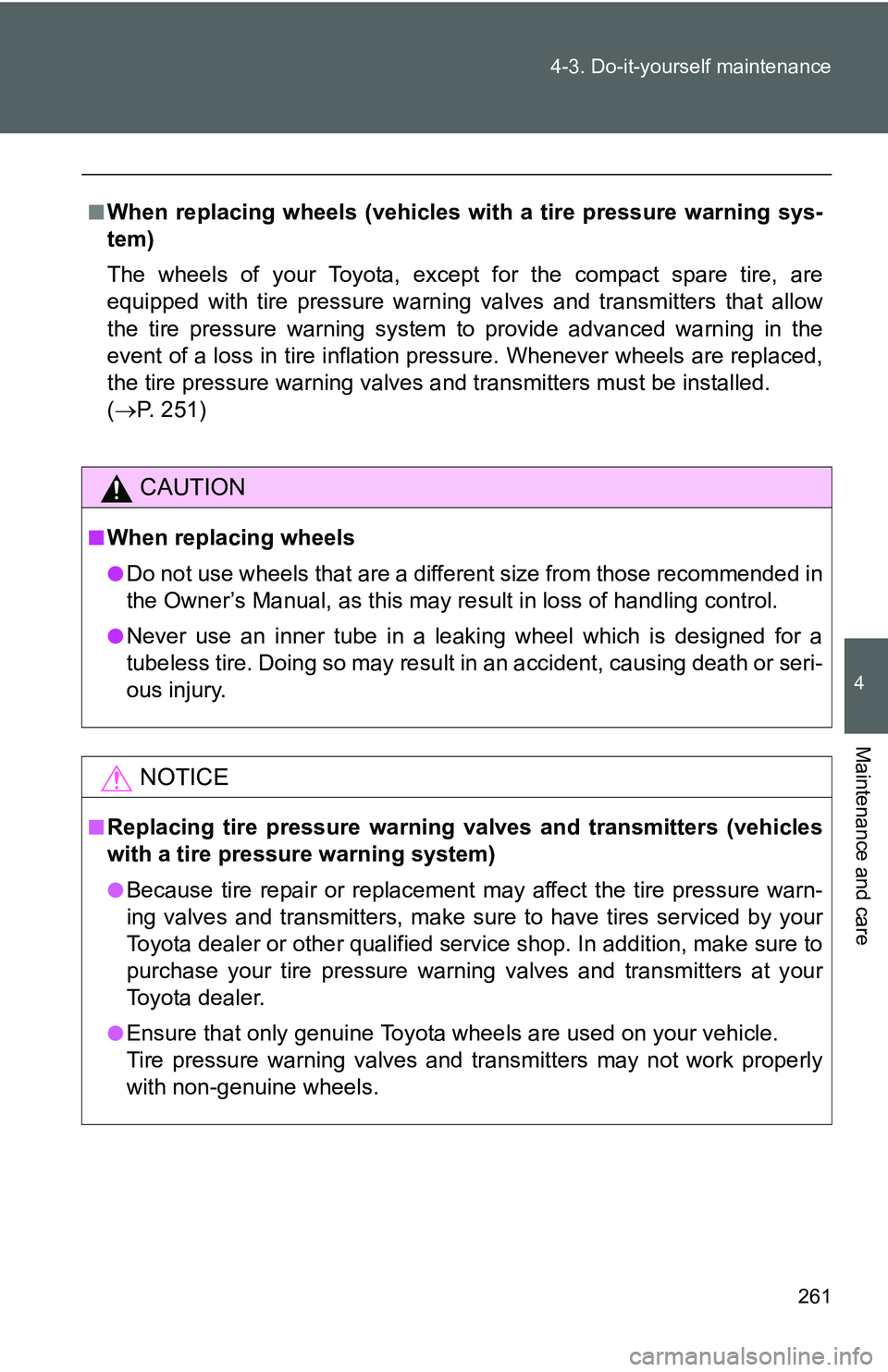
261
4-3. Do-it-yourself maintenance
4
Maintenance and care
‚Ė†When replacing wheels (vehicles with a tire pressure warning sys-
tem)
The wheels of your Toyota, except for the compact spare tire, are
equipped with tire pressure warning valves and transmitters that allow
the tire pressure warning system to provide advanced warning in the
event of a loss in tire inflation pressure. Whenever wheels are replaced,
the tire pressure warning valves a
nd transmitters must be installed.
( ‚Üí P. 251)
CAUTION
‚Ė†When replacing wheels
‚óŹDo not use wheels that are a different size from those recommended in
the Owner’s Manual, as this may re sult in loss of handling control.
‚óŹNever use an inner tube in a leaking wheel which is designed for a
tubeless tire. Doing so may result in an accident, causing death or seri-
ous injury.
NOTICE
‚Ė†Replacing tire pressure warning valves and transmitters (vehicles
with a tire pressure warning system)
‚óŹBecause tire repair or replacement may affect the tire pressure warn-
ing valves and transmitters, make su re to have tires serviced by your
Toyota dealer or other qualified service shop. In addition, make sure to
purchase your tire pressure warning valves and transmitters at your
Toyota dealer.
‚óŹEnsure that only genuine Toyota wheels are used on your vehicle.
Tire pressure warning valves and transmitters may not work properly
with non-genuine wheels.
Page 273 of 406
262
4-3. Do-it-yourself maintenance
Air conditioning filter‚ąó
‚ąó: If equipped
The air conditioning filter must be changed regularly to maintain air
conditioning efficiency.
‚Ė† Removal method
Turn the engine switch off.
Open the glove box.
Slide off the damper.
Push in each side of the glove
box to disconnect the claws.
Page 274 of 406
263
4-3. Do-it-yourself maintenance
4
Maintenance and care
Pinch the latches.
Remove the filter cover.
Pull out the filter.
Rotate the filter to remove it.
‚Ė† Installing method
Set a new filter.
The ‚Äú ‚ÜĎ UP‚ÄĚ marks shown on the
filter should be pointing up.
Rotate the filter.
Push in the filter.
Page 275 of 406
264 4-3. Do-it-yourself maintenance
‚Ė†Checking interval
Inspect and replace the air conditioning filter according to the maintenance
schedule. In dusty areas or areas wit h heavy traffic flow, early replacement
may be required. (For scheduled maintenance information, please refer to
the ‚ÄúScheduled Maintenance Guide‚ÄĚ or ‚ÄúOwner‚Äôs Manual Supplement‚ÄĚ.)
‚Ė† If air flow from the vents decreases dramatically
The filter may be clogged. Check the filter and replace if necessary.
NOTICE
‚Ė†When using the air conditioning system
Make sure that a filter is always installed.
Using the air conditioning system without a filter may cause damage to the
system.
Page 276 of 406
265
4-3. Do-it-yourself maintenance
4
Maintenance and care
Key batter y‚ąó
‚ąó: If equipped
Replace the battery with a new one if it is discharged.
‚Ė†You will need the following items:
‚óŹFlathead screwdriver (To prevent damage to the key, cover
the tip of the screwdriver with plastic tape.)
‚óŹ Lithium battery CR2016
‚Ė† Replacing the battery
Remove the cover.
Remove the module.
Remove the battery cover and
the depleted battery.
Insert a new battery with the
‚Äú+‚ÄĚ terminal facing up.
Page 277 of 406
266 4-3. Do-it-yourself maintenance
‚Ė†If the key battery is discharged
The following symptoms may occur.
‚óŹThe wireless remote control will not function properly.
‚óŹ The operational range is reduced.
‚Ė† Use a CR2016 lithium battery
‚óŹBatteries can be purchased at your Toyota dealer, jewelers, or camera
stores.
‚óŹ Replace only with the same or equivalent type recommended by your
Toyota dealer.
‚óŹ Dispose of used batteries according to the local laws.
CAUTION
‚Ė†Removed battery and other parts
Keep away from children. These parts are small and if swallowed by a child,
they can cause choking. Failure to do so could result in death or serious
injury.
NOTICE
‚Ė†For normal operation after replacing the battery
Observe the following precautions to prevent accidents.
‚óŹAlways work with dry hands.
Moisture may cause the battery to rust.
‚óŹ Do not touch or move any other components inside the remote control.
‚óŹ Do not bend either of the battery terminals.
Page 278 of 406
267
4-3. Do-it-yourself maintenance
4
Maintenance and care
Checking and replacing fuses
If any of the electrical components do not operate, a fuse may have
blown. If this happens, check and replace the fuses as necessary.
Turn the engine switch off.
The fuses are located in the following places. To check the
fuses, follow the in structions below.
‚Ė† Engine compartment
Ty p e A
Remove the cover.
Ty p e B Push the tab in and lift the lid
off.
Page 279 of 406
268 4-3. Do-it-yourself maintenance
‚Ė†Under the instrument panel
Ty p e A
1. Open the auxiliary box.
2. Pull up the box and disen-gage the claws. Remove
the stoppers from the cut-
outs and remove the box.
Ty p e B Remove the lid.
Page 280 of 406
269
4-3. Do-it-yourself maintenance
4
Maintenance and care
After a system failure, s
ee “Fuse layout and amperage
ratings‚ÄĚ (‚Üí P. 271) for details about which fuse to check.
Remove the fuse with the pull-
out tool.
Check if the fuse has blown.
Ty p e A
Normal fuse
Blown fuse
Replace it with one of an
appropriate amperage rating.
The amperage rating can be
found on the fuse box lid.
Trending: jump start, engine overheat, steering wheel adjustment, radiator, air condition, AUX, low oil pressure


